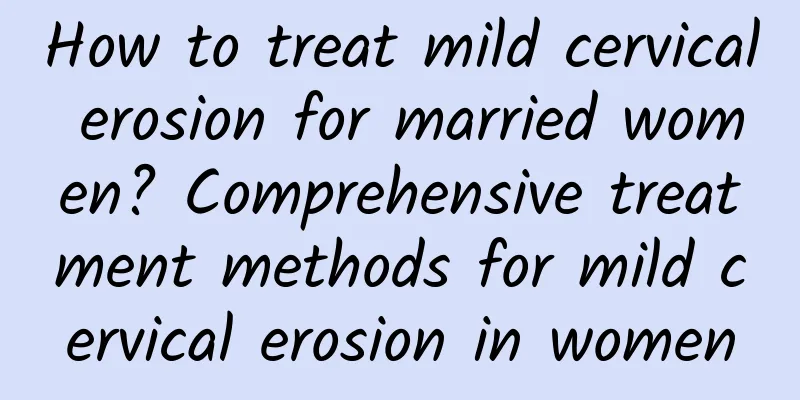How much do you know about the precautions after an abortion?

|
What are the precautions after artificial abortion? How much do you know about the precautions after artificial abortion? Painless abortion uses a new type of safe and effective intravenous general anesthetic. So what are the precautions after artificial abortion? In response to this question, let the experts introduce the precautions after artificial abortion to us in detail. Things to note after an abortion: Uterine perforation is extremely rare. If the surgeon pays attention to it and operates carefully and gently, it can be avoided. If it is only uterine perforation without intra-abdominal bleeding, the patient can be hospitalized for observation. Otherwise, the perforation should be sutured immediately. This is the precaution after artificial abortion. Infection is obviously a precaution after artificial abortion. If there is uncontrolled genital inflammation before the operation, or if the aseptic operation is not strictly performed during the operation, it may cause pelvic infection, and anti-infection treatment should be carried out immediately. Things to note after an artificial abortion: Menstrual disorders Within 3 to 6 months after surgery, the menstrual volume may increase and the menstruation may be irregular, but it can usually recover naturally. Uterine bleeding: The amount of bleeding during surgery is usually less than 30ml. If the amount of bleeding is large, in addition to giving uterine contraction drugs, the residual embryonic tissue in the uterine cavity should be quickly removed. Bleeding generally lasts 3 to 4 days after abortion. If the bleeding is similar to menstrual flow and continues, it may be an incomplete abortion or a combined infection, and you should go to the hospital for examination. If the embryonic tissue is not completely removed during the residual pregnancy tissue surgery, it may cause bleeding and lower abdominal pain. Chinese medicine and uterine contraction drugs can be used to promote its expulsion, or even another curettage to clean the uterine cavity. Intrauterine adhesions occur occasionally. They are usually caused by damage to the cervix and uterine cavity during surgery. They can block the discharge of menstrual blood, causing amenorrhea, cyclical abdominal pain, long-term infertility or repeated miscarriage. The main treatment method is to dilate the cervix and separate the adhesions before placing an intrauterine contraceptive device to prevent the recurrence of intrauterine adhesions. This is also a precaution after artificial abortion. What are the precautions after artificial abortion? The above is a detailed introduction of the precautions after artificial abortion by experts. I hope it can help you. If you have more questions about artificial abortion, you can click on our related website for consultation. Finally, I wish you good health. Abortion http://www..com.cn/fuke/yc/rl/ |
<<: What kind of people are not suitable for abortion?
>>: Do you know the symptoms of an enlarged cervix?
Recommend
What are the causes of dysmenorrhea?
Dysmenorrhea is a problem that every woman will e...
Belly fat may be caused by uterine fibroids
Whenever the belly bulges, many women will only t...
A brief introduction to the causes of cervical hypertrophy
We must understand the causes of cervical hypertr...
What if my period stops after one day?
Why does my period stop after one day? If menstru...
The latest nursing methods for cervical precancerous lesions
Cervical precancerous lesions are a disease that ...
What are the precautions for preventing cervicitis?
Cervicitis is a common gynecological inflammation...
Calories in 1 egg yolk crisp = 1 bowl of rice! Nutritionists teach you 4 tips to eat mooncakes without losing weight
The Mid-Autumn Festival is coming soon. It is a t...
Changes in reproductive organs can cause irregular menstruation in women
The cause of irregular menstruation may be organi...
Is endometrial tuberculosis contagious?
Is endometrial tuberculosis contagious? Nowadays,...
The main causes of ectopic pregnancy in women
Women who are pregnant must go to the hospital to...
Can I get pregnant with uterine fibroids?
Women with uterine fibroids can get pregnant, but...
Appetite is easy to lose control in autumn. 3 tips to eat midnight snacks without gaining weight
Autumn is here, and as the nights get cooler, our...
What are the main symptoms of cervicitis in women? There are three main symptoms of cervicitis in women.
Cervicitis is the most common type of inflammatio...
Is cervical precancerous lesion serious?
Patients with cervical precancerous lesions gener...
How to eat after miscarriage
What should you eat after a miscarriage? Women ar...









